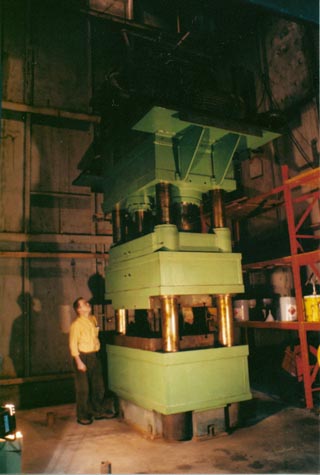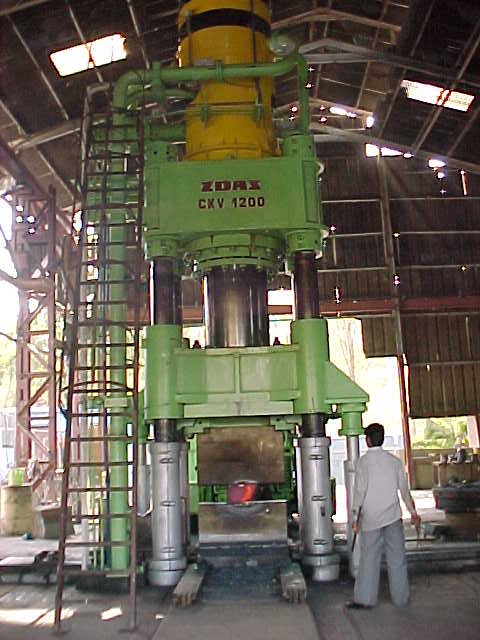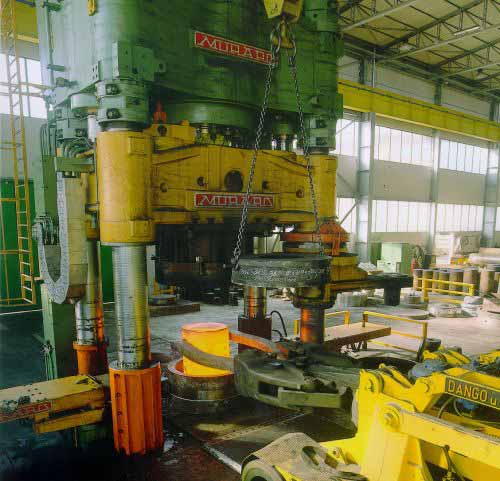|
The hydraulic press depends on Pascal's principle: the pressure throughout a closed system is constant.
At one end of the system is a piston with a small cross-sectional area driven by a lever to increase
the force. Small-diameter tubing leads to the other end of the system.
A fluid, such as oil, is displaced when either piston is pushed inward. The small piston, for a given
distance of movement, displaces a smaller amount of volume than the large piston, which is proportional
to the ratio of areas of the heads of the pistons. Therefore, the small piston must be moved a large
distance to get the large piston to move significantly. The distance the large piston will move is
the distance that the small piston is moved divided by the ratio of the areas of the heads of the pistons.
Hydraulic Press in a machine shop. This press is commonly used for hydroforming.For example,
if the ratio of the areas is 5, a force of 100 newtons on the small piston will produce a force of
500 newtons on the large piston, and the small piston must be pushed 50 cm to get the large piston
to rise 10 cm. This is how energy, in the form of work in this case, is conserved. Work is force times
distance, and since the force is increased on the larger piston, the distance the force is applied
over must be decreased. The work of the small piston, 100 newtons multiplied by 0.5 meter (50 cm)
is 50 joules (J}, which is the same as the work of the large piston, 500 newtons multiplied by
0.1 meter (10 cm).
|


